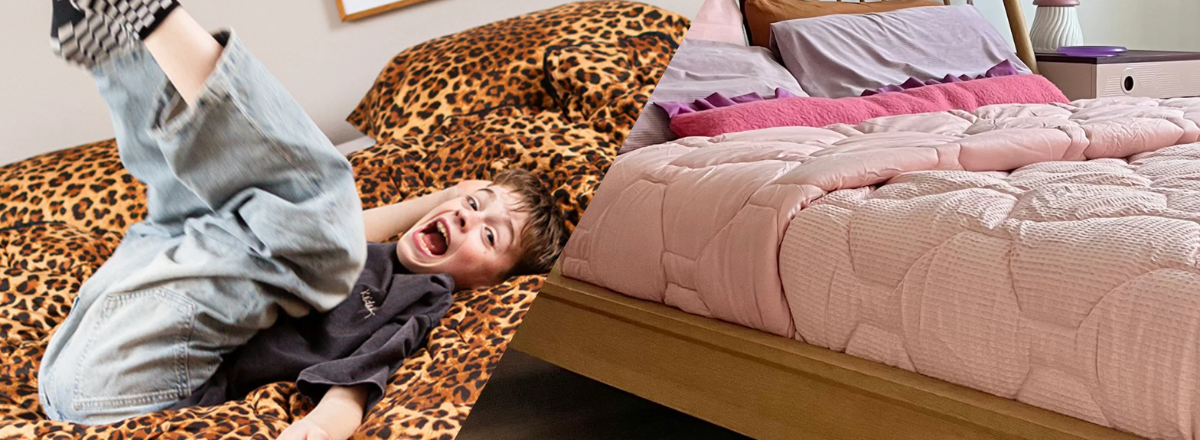Picking the right duvet for a kid takes some careful thought. Comfort, hygiene, and safety are super important here. A duvet without a cover, also called a coverless duvet, is getting more and more popular with parents. But what actually makes this kind of duvet different, and is it really a good idea for kids?
Let's take a closer look at the pros, things to watch out for, and whether duvets without covers are a good fit, so you can make a smart choice.
What is a duvet without a cover?
A duvet without a cover is a clever product where the outer layer is designed so you don't need a separate cover. The outside is all one piece with the filling and is usually made to be durable and easy to take care of. That means you can just put the duvet straight on the bed and wash the whole thing whenever you need to.
It's a pretty cool solution for parents who want things to be easier and less complicated when making up a kid's room.
What should you look for in a duvet without a cover for kids?
Even though a duvet without a cover has some great perks, there are a few important things you need to watch out for to make sure it's actually suitable for kids.
1. Breathable material
Kids are usually more sensitive to temperature changes while they're sleeping. A duvet made from breathable materials, like microfiber or cotton, makes sure heat doesn't get trapped and moisture gets wicked away. This helps prevent overheating and makes for a comfy night's sleep.
2. Easy to maintain
Kids sweat more in their sleep and can have little accidents, like spills or wetting the bed at night. That's why a duvet you can just toss in the washing machine and that dries quickly is a big plus. Make sure to check the size to see if it actually fits in your washing machine.
3. Safety
For little kids, it's important that the duvet doesn't have any loose buttons, ties, or other bits that could be unsafe. Go for a duvet with a smooth finish to avoid any risks.
4. Weight and size
A duvet without a cover should be light and easy for kids to handle. The weight needs to be comfy, so it doesn't get in the way while they're sleeping. Plus, the size should match your kid's age and bed.
Why do parents consider a duvet without a cover for their kids?
A lot of parents are choosing duvets without covers for their kids more and more, just because it's so practical. Here are the main benefits:
- No separate cover needed: This saves you time and effort when making the bed.
- Less laundry: You only have to wash the duvet itself, not a separate cover.
- Easy to make up: Kids can make their own bed way faster.
- Hygienic: Since you can wash the whole duvet, it always stays fresh and clean.
For busy families and parents who care about simplicity and hygiene, a duvet without a cover is super convenient.
Age suitability
A duvet without a cover from happybed is especially good for kids from toddler age (around 2 years old), when they're sleeping in a regular kids' bed. But for babies and really young toddlers, official guidelines still recommend a sleeping bag or a sheet, since that's safer.
For older kids and teens, a duvet without a cover can be a great option, making bedtime easier and more hygienic for a stress free sleep routine.
Conclusion
A duvet without a cover can be a super practical and comfy choice for kids, as long as you pick the right one that ticks the boxes for breathability, safety, and easy care. It's simple for parents and can help create a cozy sleep spot for your child.
If you're thinking about getting a duvet without a cover, make sure to consider the material, how easy it is to wash, and whether it's suitable for your kid's age. By paying attention to these things, you can pick a duvet that fits both your child's needs and your own wishes when it comes to maintenance and ease of use.


















 Continue shopping
Continue shopping






